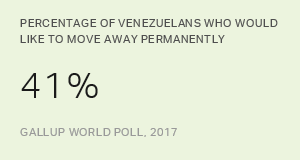Story Highlights
- 52% in Colombia say rich/poor gap has increased in the past five years
- 45% struggled to afford food in the past 12 months -- a new high
- 43% have lacked money for shelter in the last year
WASHINGTON, D.C. -- Income inequality is not a new problem in Colombia. The country continues to suffer from one of the highest inequality rates in the Western Hemisphere. But the perception among most Colombians that the gap between the rich and poor is getting worse or staying the same -- as well as their own increasing struggles to afford the basics -- may help explain why so many have taken to the streets to protest in recent weeks.
A majority of Colombians (52%) surveyed a month before the protests started in late November say that compared with five years ago, the difference between the rich and poor in their country has increased. And more than one in three (35%) say it has stayed the same.
Colombia has traditionally been an economically stratified country with high levels of income inequality throughout its history. In recent decades, traditional development measures for Colombia, such as per capita GDP, life expectancy and foreign direct investment have grown steadily. However, this has not translated to greater income equality.
So, when the government proposed economic and social reforms that were perceived as benefiting business while further disenfranchising the working classes, indigenous groups, young people, women and ethnic minorities, frustrated Colombians spilled into the streets.
Nearly Half of Colombians Struggled to Afford Food in Past Year
The percentage of Colombians who are struggling to afford food has gradually increased every year since 2015. Currently, 45% of Colombians say they were unable to afford food they or their families needed at times in the past 12 months -- a new high in Gallup's decade-plus trend.
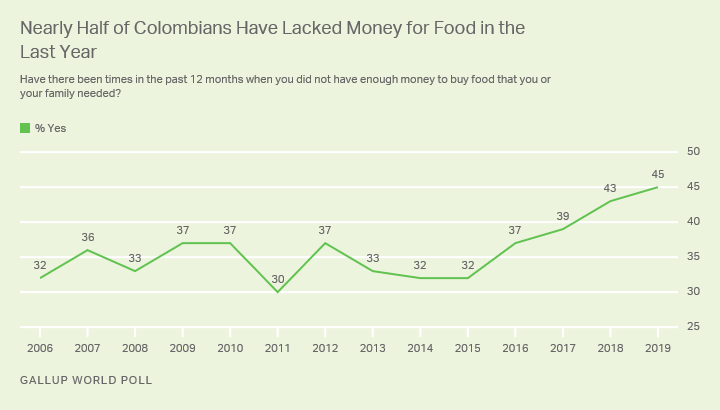
The struggles to afford the basics have been particularly acute for Colombian women, the majority of whom (51%) in 2019 said they have struggled to afford food in the last year. Since they were at near parity in 2014, the percentages of men and women reporting they lacked money for food have increased, but this growth has been disproportionately greater among women.
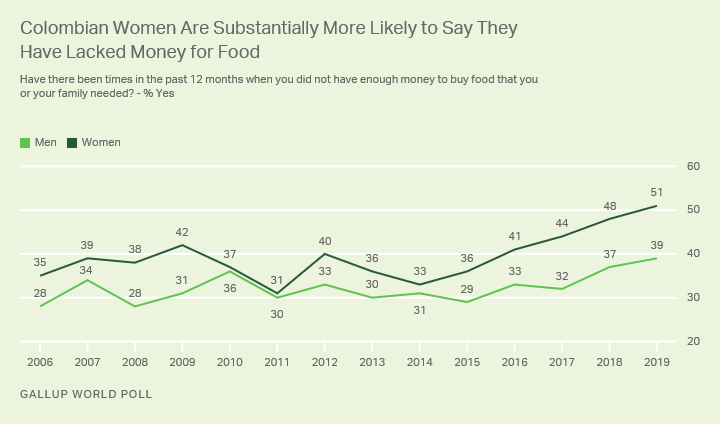
Many Colombians Unable to Afford Adequate Shelter in the Past Year
More than four in 10 Colombians (43%) report having lacked money for shelter in the last year. This is essentially unchanged from last year when 42% said the same. However, these numbers both represent about a 20-percentage-point increase from levels in 2015 and continue to be record highs.
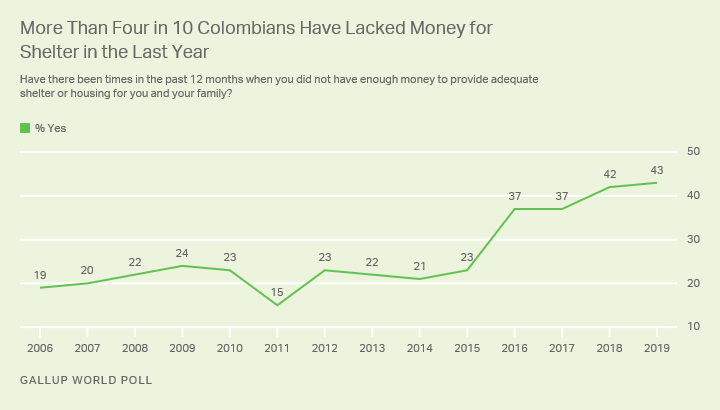
As with the percentage of Colombians who report having had insufficient funds for food in the last year, there is also a gender gap in those who have not had enough money for shelter. Nearly half of Colombian women, 48%, say they have lacked money for shelter in the last year, compared to 38% of men.
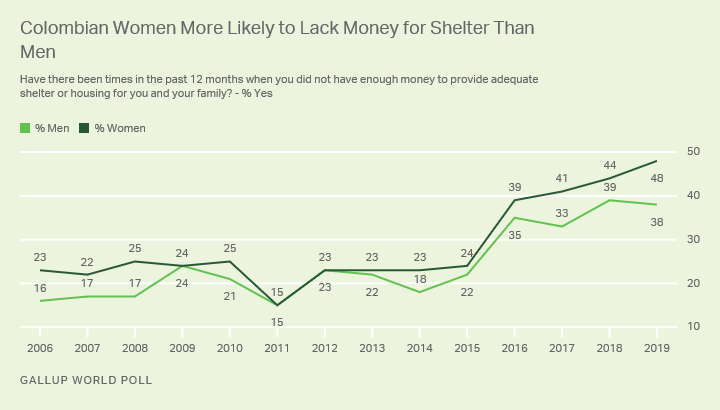
Bottom Line
The unrest in Colombia's streets is directed at the current government's action and inaction related to education, economic, employment and social policies, however frustration in the country has been building since 2015. Life became harder for Colombians in 2015 -- oil prices fell and economic growth slowed. On top of this, Colombia also began receiving a continuous influx of fleeing Venezuelans, further testing the country's infrastructure and services.
Overall in recent years, these struggles have been particularly hard on the country's women. Colombian women report substantially higher rates of food and shelter insecurity than men. In addition to the perception that the fruits of Colombia's economic growth are mostly benefiting the wealthy, this growth is also disproportionately benefiting men.
Many Colombians were primed for change ahead of Duque's election in 2018, but the number of them taking to the streets now suggest these changes were not the ones they expected or wanted.
For complete methodology and specific survey dates, please review Gallup's Country Data Set details.
Learn more about how the Gallup World Poll works.



